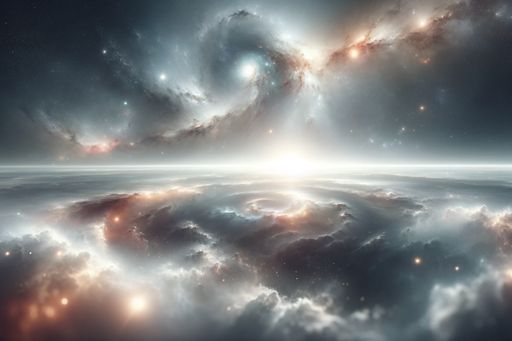James Webb Space Telescope Captures Image of Gravitational Lensing
The James Webb Space Telescope has captured an image of a galaxy warped by gravitational lensing, providing valuable insights into the expansion of the universe.

Galaxy Warped by Gravitational Lensing
The James Webb Space Telescope has captured a new image that showcases the phenomenon of gravitational lensing. Gravitational lensing occurs when massive objects in the universe warp space, causing light to bend and distort. In this image, a galaxy called MRG-M0138, located 10 billion light-years away, is seen warped by gravitational lensing.
The distorted image of the galaxy appears vivid due to the magnification caused by the cosmic lens. And within this magnified image, astronomers have made an exciting discovery: the presence of a supernova. The supernova, known as "Supernova Encore," appears multiple times in the image.
Unveiling the Expansion Rate of the Universe
The presence of the supernova in the warped galaxy image offers astronomers a valuable opportunity to study the expansion rate of the universe. When a supernova explodes behind a gravitational lens, its light reaches Earth through different paths. By analyzing the differences in the times that the supernova images appear, astronomers can measure the history of the expansion rate, known as the Hubble constant.
This measurement is considered a major challenge in cosmology, and the rare occurrence of a supernova appearing multiple times in an image provides a unique chance to make this measurement. Astronomers expect to observe another copy of the supernova in the same galaxy in the 2030s, further refining their understanding of the universe's expansion.
The Power of the James Webb Space Telescope
The James Webb Space Telescope, a collaboration between NASA, the ESA, and the Canadian Space Agency, possesses unique capabilities that enable groundbreaking discoveries.
With its giant mirror, over 21 feet across, the Webb telescope captures more light than its predecessor, the Hubble Space Telescope. This allows it to observe distant and ancient objects, providing insights into the early universe. Additionally, Webb's primarily infrared view allows it to penetrate areas that were previously hidden from visible light telescopes, unveiling new aspects of the cosmos.
Furthermore, the telescope's specialized equipment called spectrographs enables the study of exoplanets in the Milky Way galaxy. By analyzing the molecules present in their atmospheres, astronomers can learn more about these distant worlds and potentially make unexpected discoveries.



